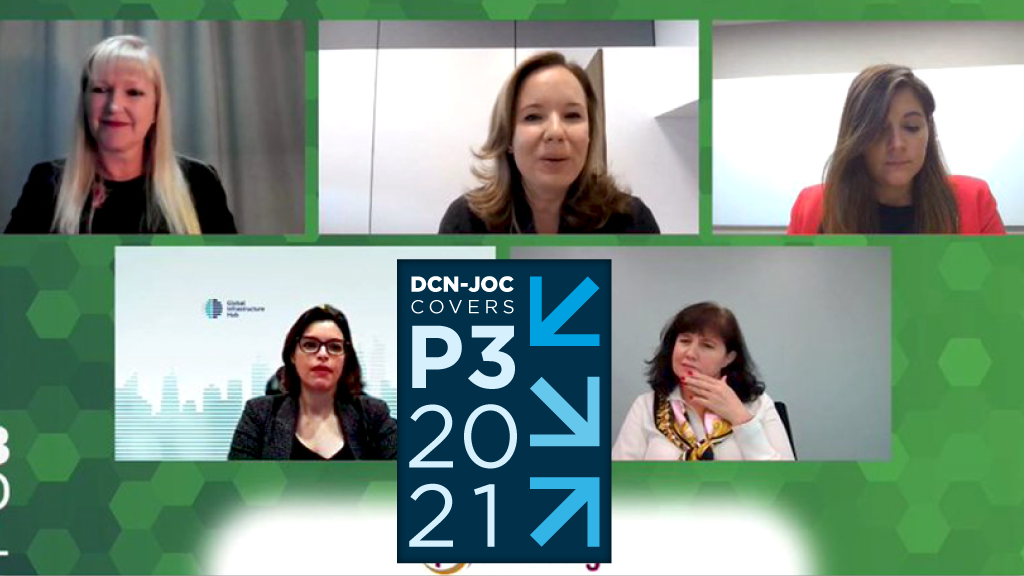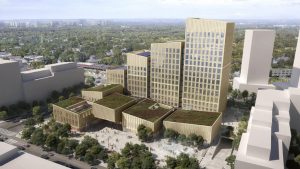Leveraging new and collaborative procurement and delivery models along with balancing risk and reward will be key to building back better following the COVID-19 pandemic, said an all-female panel of infrastructure agency leaders.
During a recent session at the Canadian Council for Public-Private Partnerships conference billed, Answering the Call: Top CEOs share vision for how to ‘Build Back Better,’ the leaders of the agencies and organizations agreed the biggest challenge right now is market capacity in terms of labour and material availability.
“This is showing up in a number of different ways but most noticeably increases in costs and longer schedules due to supply chain disruption. We are also seeing a decrease in the willingness of the market to assume certain risks,” said Angela Clayton, president of project delivery at Infrastructure Ontario (IO).
To manage the challenge, IO is leveraging new models such as Progressive P3 procurement, said Clayton, adding it will start being used early next year on large, complex hospital projects.
“The most important lesson we’ve learned is that we want to ensure we match the project with the model,” she said. “When we decide to use a progressive approach, it’s going to depend on specific project factors such as the size, the complexity, market capacity and willingness to bear risk.
“It’s also important to note that we don’t see the classic P3 model going away. It’s going to continue to be a very important tool that we use for the execution of that aggressive pipeline.”
From a private sector perspective, Nuria Haltiwanger, CEO of ACS Infrastructure, said the increasing complexity of projects is another challenge.
“It’s not just the complexity related to technology but it’s the environment under which we are all trying to procure and deliver infrastructure right now,” she said. “We’re seeing on a number of the projects they’re getting just generally bigger. They require more specialization as it relates to incorporation of technologies.
“One of the constraints that we are seeing overall has been are we unable to get the materials and the equipment that we need as well as an issue as it relates to diversifying our supply chain,” she added.
Alina Osorio, president of Fiera Infrastructure, said the P3 model is attractive to investors but other models could work as well.
“Perhaps some of the recent challenges in the industry are around trying to find that right balance between risk and reward,” Osorio said. “We certainly recognize that going forward some of these models need to be tweaked.
“It’s not to say that that the private sector and investors like us can’t deal with risk, we can.”
There are going to be issues that arise on all projects regardless of the delivery model, Haltiwanger noted.
“Finding the solutions is the most important part and being able to work collaboratively in the solutions,” she said. “As the projects get more complex, the need for us to work together to find innovative means to address them is more important.”
Ensuring the public partner is properly staffed and able to address the needs is crucial, she added.
“That’s sometimes been a challenge because people are coming in still with the traditional mindset and it really is a shift in mindset as to how you’re going to address the projects and deliver them going forward,” Haltiwanger said. “If we’ve learned anything during this pandemic is that we need to be able to shift and evolve so the models do as well.”
Clayton said many people in the audience would suggest there is no partnership in P3.
“Having been on both the public sector and private sector side, I don’t believe that to be true,” she said. “My experience has been it actually comes down to the individuals and their behaviours.
“I don’t think either side enters into these agreements with a plan to fight for the next 30 years. That is certainly not anybody’s intention.”
Marie Lam-Frendo, CEO of Global Infrastructure Hub, said research shows in G20 countries, the economic recovery will be infrastructure-led and therefore it’s important to consider the best models to deliver the many large projects.
“One of the key findings is that there is no such thing that one model fits all,” she said. “Through our research we noted that several procurement agencies had reached the conclusion that it needed to be fairly agnostic, that the delivery model focus on the nature of the project, its size, complexity, environmental circumstances, financing need and then to select the one model…that really suits the procurement requirements of the project at hand. One size does not fit all but a few well-tailored sizes can probably do the trick.”
Follow the author on Twitter @DCN_Angela.











Recent Comments
comments for this post are closed